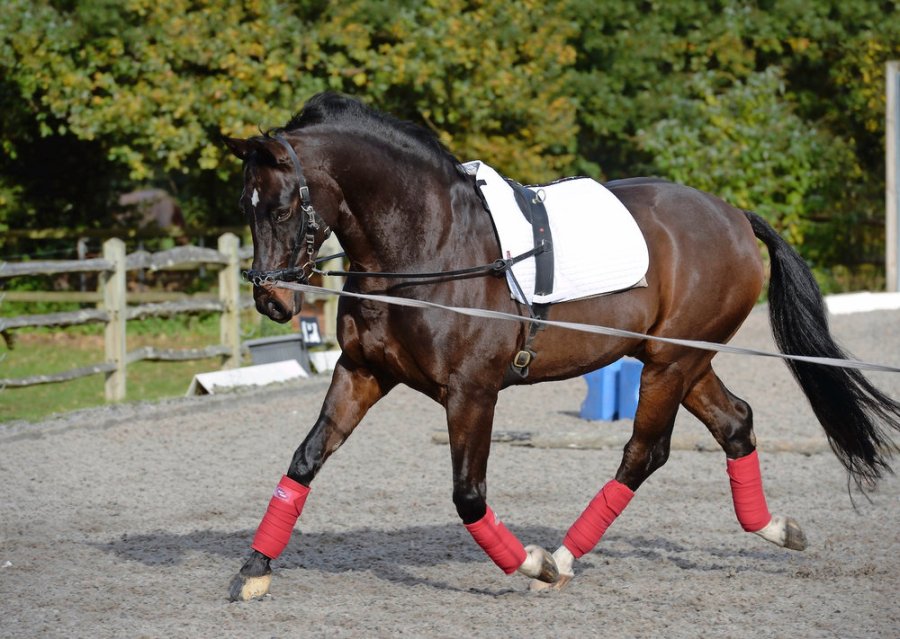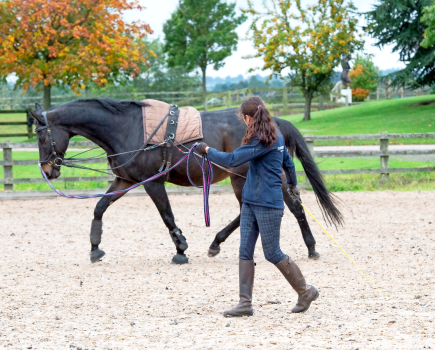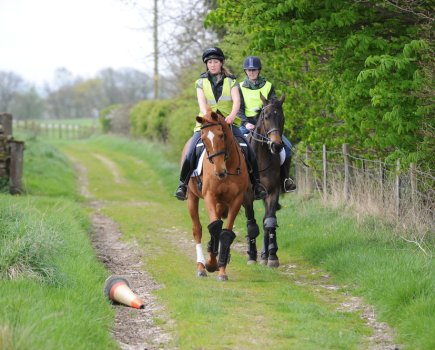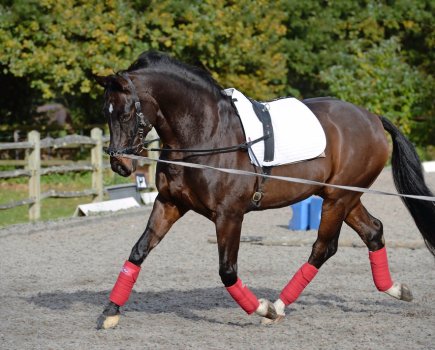If the thought of lungeing your horse sends you into a spin it’s time to think again, as there’s much more to it than ever-lasting circles. When done correctly, it delivers so many benefits. Lungeing is a great way to bond with your horse, as well as getting to know how he moves and where he may be carrying any tension. If you’ve fallen out of love with it, or avoid it like the plague, we guarantee to inject a bit of energy and focus into your lungeing so your horse can have a proper workout and improve his way of going.
Why lunge?
When you work your horse correctly on the lunge, it’s a great way to encourage him to use and develop all the right muscles that will improve his way of going when you ride.
Also, from your position on the ground, you can watch how your horse moves and spot any irregularities in his muscle development. It gives you a benchmark for where your horse’s training is and highlights the areas that need working on, such as improving his suppleness and balance. What you see when you lunge your horse will help you formulate a targeted training plan for him. Read on for tips and advice to boost your technique, and help you recognise when your horse is working correctly.
For effective lungeing your position is really important. This can take a bit of practise to perfect, but if you follow these simple tips you’ll be lungeing like a pro in no time:
· Communicate: To give your horse clear aids, and direct him, your lunge line and whip should form a triangle. He’s the bottom of the triangle and you’re the point of it, and your lunge line and whip form the sides
· Move with your horse: Don’t stand in the same spot for lungeing. Move with your horse – you’ll need to match his walk or trot steps to keep up with him
· Up the energy: To encourage your horse to go forwards, rotate your whip from his hock towards his elbow
· Stay in his work space: Your horse mustn’t encroach on your space. If he does, point your whip towards his head to encourage him to stay out and away from you
· Cope with high jinks on the lunge: If your horse has a moment and takes off on the lunge, don’t panic and immediately try to get him under control. If you get tense it will only activate his flight mechanism further. Instead, take a deep breath out, relax your shoulders and then quietly ask him to come back to walk
All the advice suggested so far is all well and good, but only if he’s working correctly will your horse feel the benefits. Here’s what to check to ensure he’s getting a good workout:
· Is your horse tracking up? Check that his inside hind hoof comes up to or into the print left by the inside fore leg
· Are his hips moving evenly? Watch your horse’s hips. On each rein you should be able to see each hip rise and fall evenly
· Do his hooves step forward away from his hocks? During his warm up his hooves may stay in line with his hocks, but as his muscles warm up they should step further under his body, creating better engagement and energy
· Is there a weave line along the edge of his ribcage from the girth area up to his stifle? This is your horse engaging his core muscles, which in turn lift his back
· Does the underside of your horse’s neck look soft and relaxed? Does the top of his neck form an arc shape? You may see a sausage shaped muscle appear under his crest, too, if he’s moving correctly
· Are his ears floppy? The more relaxed your horse is in his jaw and poll the floppier his ears will be
Don’t miss the latest issue of Your Horse Magazine, jam-packed with training and veterinary advice, horse-care tips and the latest equestrian products available on shop shelves, on sale now.









